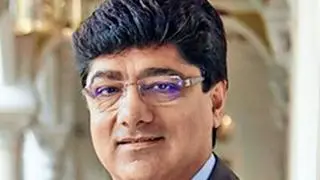Ahead of the festival season, hotels in the country are seeing a robust demand. Industry experts said that there is a steady rise of 20-30 per cent in occupancies compared to last year and hotels are bullish of being able to be at par with pre-Covid level bookings soon.
Manoj Agarwal, Head – Asset Management, InterGlobe Hotels, said, “If this momentum continues, we should be able to close at around 60 per cent higher revenue than the last financial year.” Other hotel chain Sterling also expects revenues to surpass pre-Covid levels.
“Hotels are observing month-on-month improvement in bookings since the end of the Covid second wave, and the overall mood is upbeat. The December quarter has been robust and we expect similar traction this year too. Even during 2020, hotels saw a surge in business in the December quarter ,” said Rajneesh Malhotra, COO, Chalet Hotels Ltd.
“We’ve started seeing an increase in queries for upcoming long weekends and festival day bookings. We are expecting a 200 per cent rise in numbers. While last year, people were going for longer stays, this time around shorter stays are popular,” said Devendra Parulekar, Founder, SaffronStays.
Worst-hit sector
The hospitality sector has been one of the worst affected by the pandemic. In FY21, the Indian hospitality industry has recorded its lowest revenue per available room (RevPAR) of ₹1,582 in the last 22 years, according to a report by Hotelivate. This is a 60.8 per cent decline over the last year.
But, now, according to a report by HVS Anarock, the occupancies have been at least 50-52 per cent higher a month-on-month basis and a 25 per cent higher on a year-on-year basis.
“Chandigarh, Mumbai and Delhi are the market leaders with occupancy rates of over 60 per cent during the month, surpassing industry expectations. Average daily rates are also improving across markets, with Goa and Chennai leading the way,” it said.
Occupancy levels
According to Nishant Pitti, CEO and co-founder, EaseMyTrip, overall, the occupancy at leisure properties such as five-star hotels and resorts are 80 per cent and metros such as Delhi, Mumbai and Bengaluru are running at 50 per cent occupancy.
“Additionally, the number of bookings for four-star and five-star hotels has doubled as compared to last year. The average stay has also increased from 3.2 days to 4.7 days,” he added.
There has been an improvement in the average revenue per room (ARR). Saffron Stays’ ARRs are 15 per cent higher than last year, whereas Interglobe Hotels is seeing a 20-30 per cent higher ARRs than last year. On the other hand, the ARRs for Sterling is varying from destination to destination. It has seen a 30 to 35 per cent growth on average.
All in all, hotels are optimistic that more people getting fully vaccinated and with the festival cheer round the corner, demand will pick up and provide an opportunity for further tariff corrections.








Comments
Comments have to be in English, and in full sentences. They cannot be abusive or personal. Please abide by our community guidelines for posting your comments.
We have migrated to a new commenting platform. If you are already a registered user of TheHindu Businessline and logged in, you may continue to engage with our articles. If you do not have an account please register and login to post comments. Users can access their older comments by logging into their accounts on Vuukle.